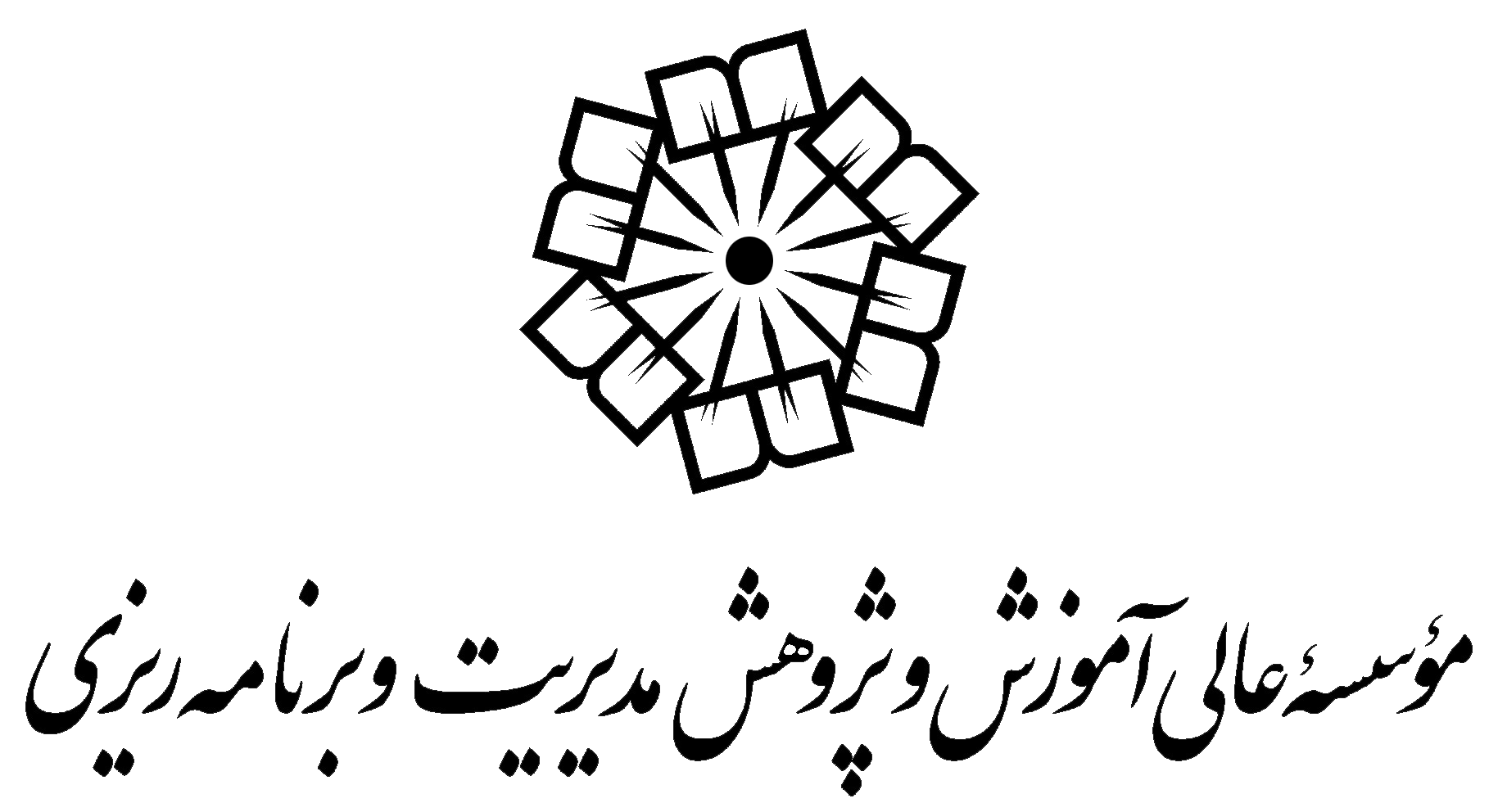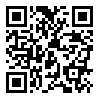دوره 36، شماره 2 - ( تابستان 1402 )
دوره36 شماره 2 صفحات 60-31 |
برگشت به فهرست نسخه ها
Download citation:
BibTeX | RIS | EndNote | Medlars | ProCite | Reference Manager | RefWorks
Send citation to:



BibTeX | RIS | EndNote | Medlars | ProCite | Reference Manager | RefWorks
Send citation to:
Mohammadi N, Memarzadeh Tehran G, Tootian Esfehani S. (2023). A Model for Implementing Information Technology Policies in The Sixth Development Plan Based on the Neural Network Approach. JMDP. 36(2), 31-60. doi:10.61186/jmdp.36.2.31
URL: http://jmdp.ir/article-1-4609-fa.html
URL: http://jmdp.ir/article-1-4609-fa.html
محمدی نازیلا، معمارزاده طهران غلامرضا، طوطیان اصفهانی صدیقه.(1402). طراحی مدل اجرای خطمشیهای فناوری اطلاعات برنامه ششم توسعه با رویکرد شبکه عصبی فرایند مدیریت و توسعه 36 (2) :60-31 10.61186/jmdp.36.2.31
1- گروه مدیریت دولتی، دانشکده مدیریت و اقتصاد، واحد علوم و تحقیقات، دانشگاه آزاد اسلامی، تهران، ایران.
2- گروه مدیریت دولتی، دانشکده مدیریت و اقتصاد، واحد علوم و تحقیقات، دانشگاه آزاد اسلامی، تهران، ایران ،memarzadeh@srbiau.ac.ir
3- گروه مدیریت، دانشکده حسابداری و مدیریت، دانشگاه آزاد اسلامی، واحد تهران غرب، تهران، ایران
2- گروه مدیریت دولتی، دانشکده مدیریت و اقتصاد، واحد علوم و تحقیقات، دانشگاه آزاد اسلامی، تهران، ایران ،
3- گروه مدیریت، دانشکده حسابداری و مدیریت، دانشگاه آزاد اسلامی، واحد تهران غرب، تهران، ایران
چکیده: (2778 مشاهده)
هدف: این پژوهش بهمنظور ارائه مدل اجرای خطمشیهای فناوری اطلاعات در برنامه ششم توسعه به کمک روش مدلسازی شبکه عصبی انجامشده است.
طرح پژوهش/ روششناسی/ رویکرد: تحقیق بر مبنای هدف، کاربردی و روش تحقیق، پیمایشی است. گردآوری دادهها، با ابزار پرسشنامه صورت گرفته است. جامعه آماری در بخش شناسایی عوامل، مدیران شرکت مخابرات ایران میباشند که 15 نفر بهعنوان پنل خبرگان انتخاب شدند. جامعه آماری در بخش آزمون،کارشناسان فناوری اطلاعات برابر 810 نفر بودند که 260 نفر نمونه انتخاب شدند. برای تحلیل دادهها از نرمافزار MATLABR2019b استفاده شد.
یافتهها: بر اساس یافتهها عوامل مؤثر بر اجرا در دو بعد اصلی ساختار و کارکرد و ده بعد فرعی (محیط، خطمشی، اندازه سازمان، فرهنگ، تکنولوژی، توسعه منابع انسانی، توسعه زیرساخت، توسعه برنامهها، توسعه بخش خصوصی و تامین محتوا) قابلبررسی میباشند. طبق یافتههای شبکه عصبی بهترین ساختار اجرا، دارای 1 لایه ورودی با 5 متغیر ورودی و 1 لایه پنهان با 10 نرون و 1 لایه خروجی با 1 متغیر خروجی میباشد.
ارزش/ اصالت پژوهش: از نظر مفهوم شناسی، برای اولین بار با رویکردی ترکیبی، عوامل موثر بر اجرای خطمشیهای فناوری اطلاعات شامل ساختار و کارکرد (هر دو متغیر) تبیین شده و از نظر روش شناسی، مدلسازی با استفاده از روش شبکه عصبی در این زمینه، از دیگر جنبه های نو در این پژوهش است. از نظر ارزش کاربردی، در این پژوهش روشن میشود که بهترین ترکیب توسعه زمانی است که تمام متغیرهای ورودی همزمان در نظر گرفته شوند و ضعیفترین حالت نیز زمانی است که توسعه زیرساخت نادیده گرفته شود.
طرح پژوهش/ روششناسی/ رویکرد: تحقیق بر مبنای هدف، کاربردی و روش تحقیق، پیمایشی است. گردآوری دادهها، با ابزار پرسشنامه صورت گرفته است. جامعه آماری در بخش شناسایی عوامل، مدیران شرکت مخابرات ایران میباشند که 15 نفر بهعنوان پنل خبرگان انتخاب شدند. جامعه آماری در بخش آزمون،کارشناسان فناوری اطلاعات برابر 810 نفر بودند که 260 نفر نمونه انتخاب شدند. برای تحلیل دادهها از نرمافزار MATLABR2019b استفاده شد.
یافتهها: بر اساس یافتهها عوامل مؤثر بر اجرا در دو بعد اصلی ساختار و کارکرد و ده بعد فرعی (محیط، خطمشی، اندازه سازمان، فرهنگ، تکنولوژی، توسعه منابع انسانی، توسعه زیرساخت، توسعه برنامهها، توسعه بخش خصوصی و تامین محتوا) قابلبررسی میباشند. طبق یافتههای شبکه عصبی بهترین ساختار اجرا، دارای 1 لایه ورودی با 5 متغیر ورودی و 1 لایه پنهان با 10 نرون و 1 لایه خروجی با 1 متغیر خروجی میباشد.
ارزش/ اصالت پژوهش: از نظر مفهوم شناسی، برای اولین بار با رویکردی ترکیبی، عوامل موثر بر اجرای خطمشیهای فناوری اطلاعات شامل ساختار و کارکرد (هر دو متغیر) تبیین شده و از نظر روش شناسی، مدلسازی با استفاده از روش شبکه عصبی در این زمینه، از دیگر جنبه های نو در این پژوهش است. از نظر ارزش کاربردی، در این پژوهش روشن میشود که بهترین ترکیب توسعه زمانی است که تمام متغیرهای ورودی همزمان در نظر گرفته شوند و ضعیفترین حالت نیز زمانی است که توسعه زیرساخت نادیده گرفته شود.
نوع مطالعه: پژوهشي |
موضوع مقاله:
رویکردهای مدیریت دولتی
دریافت: 1402/1/16 | پذیرش: 1402/6/20 | انتشار الکترونیک: 1402/8/20
دریافت: 1402/1/16 | پذیرش: 1402/6/20 | انتشار الکترونیک: 1402/8/20
فهرست منابع
1. Asadifard, R., Fani, A. A., Azar, A., & Alvani, S. M. (2016). Public Policy Analysis Model in Iran. Journal of Public Administration, 8(2), 255-276. [In Farsi] [DOI:10.22059/jipa.2016.59879]
2. Babaei, S., Vaezi, R., Pourezzat, A. A., & Hosseinpour, D. (2023). A Model of Iranian Administrative System Based on Academic and Professional Experts' Outlook. Management and Development Process, 35(4), 3-38. [In Farsi] [https://doi.org/10.52547/jpap.2022.226151.1168] [DOI:10.61186/jmdp.35.4.3]
3. Barbosa, M. C., Alam, K., & Mushtaq, S. (2016). Water Policy Implementation in the State of São Paulo, Brazil: Key Challenges and Opportunities. Environmental Science & Policy, 60(1), 11-18. [DOI:10.1016/j.envsci.2016.02.017]
4. Blau, P. M. (1970). A Formal Theory of Differentiation in Organizations. American Sociological Review, 35(2), 201-218. [DOI:10.2307/2093199]
5. Emery, F. E., & Trist, E. L. (1965). The Causal Texture of Organizational Environments. Human Relations, 18(1), 21-32. [DOI:10.1177/001872676501800103]
6. Esmail Asadi, R., & Goodarzi, M. (2018). Impact of United Nations Development Plans on Development Programs of Iran. Research Letter of International Relations, 11(43), 9-47. [In Farsi]
7. Ganji Bidmeshk, O., Mehraeen, M., & Ghaffari, K. (2022). Providing a Framework for Measuring Knowledge Management Maturity in Public Organizations: A Case Study of Ferdowsi University. The Journal of Productivity Management, 16(2), 23-49. [In Farsi] [DOI:10.30495/qjopm.2021.1930028.3146]
8. Giddens, A. (1986). The Constitution of Society: Outline of the Theory of Structuration (Vol. 349): University of California Press.
9. Jalali, S. M., Shafizadeh, H., & Soleymani, N. (2022). Causal Relationship Model of Network Policy in Non-Formal Skill Training. Skill Training, 11(41), 165-180. [In Farsi] [DOI:10.52547/irtvto.11.41.8]
10. Jamshidi, S. H., Amini Sabbegh, Z., Sadeh, E., & Sheykholeslam Kandeloosi, N. (2021). Developing a Model for Implementing Public Policies in State-Owned, Project-Oriented Oil Companies. Management and Development Process, 34(2), 127-150. [In Farsi] [DOI:10.52547/jmdp.34.2.127]
11. Kantamaturapoj, K., McGreevy, S. R., Thongplew, N., Akitsu, M., Vervoort, J., Mangnus, A., Ota, K., Rupprecht, C. D., Tamura, N., & Spiegelberg, M. (2022). Constructing Practice-Oriented Futures for Sustainable Urban Food Policy in Bangkok. Futures, 139(1), 102949. [DOI:10.1016/j.futures.2022.102949]
12. Kohoutek, J. (2013). Three Decades of Implementation Research in Higher Education: Limitations and Prospects of Theory Development. Higher Education Quarterly, 67(1), 56-79. [DOI:10.1111/j.1468-2273.2012.00531.x]
13. Nargesian, A., Pirannejad, A., Haji Molla Mirzaei, H., & Ghorbian, A. (2021). Presentation of a Model of Implementation of Cyberspace Policies in Iran. National Security, 11(39), 161-198.
14. Quinn, R., & Cameron, K. (1999). Diagnosing and Changing Organizational Culture. Reading: Addison-Wesley.
15. Rahnavard, F. (2022). Mega-Policies of The Development Plan: A Case Study of Iran. Management and Development Process, 35(3), 3-56. [In Farsi] [DOI:10.52547/jmdp.35.3.3]
16. Rangriz, H., Kheirandish, M., & Latifi Jaliseh, S. (2018). Exploring of Public Policies Implementation Obstacles in Governmental Organizations Using the Meta Synthesis Method. Iranian Journal of Public Policy, 4(1), 123-138. [In Farsi] [DOI:10.22059/ppolicy.2018.66852]
17. Skarica, M. (2018). Implementation of the Strategy for Public Administration Development in Croatia (2015-2020): a Mid-Term Evaluation. 31st International Scientific Conference on Economic and Social Development.
18. Strauss, L. M., & Borenstein, D. (2010). Analyzing the Brazilian Higher Education System Using System Dynamics. Proceedings of the 45th Annual Conference of the ORSNZ.
19. Thompson, J. D. (2003). Organizations in Action: Social Science Bases of Administrative Theory: Transaction Publishers.
20. United Nations Development Programme (UNDP) (2015). Sustainable Development Goals. Available from: https://www.dev-practitioners.eu/media/key_documents/SDGs_Booklet_Web_En.pdf
21. Viswanathan, R., & Telukdarie, A. (2021). A Systems Dynamics Approach to SME Digitalization. Procedia Computer Science, 180(1), 816-824. [DOI:10.1016/j.procs.2021.01.331]
22. Whittington, R. (2015). Giddens, Structuration Theory and Strategy as Practice. In (pp. 145-164). Cambridge Handbook of Strategy as Practice. [DOI:10.1017/CBO9781139681032.009]
23. Wu, J., Zuidema, C., Gugerell, K., & de Roo, G. (2017). Mind the Gap! Barriers and Implementation Deficiencies of Energy Policies at the Local Scale in Urban China. Energy Policy, 106(1), 201-211. [DOI:10.1016/j.enpol.2017.03.057]
24. Zenezini, G., & De Marco, A. (2020). City Logistics Policy Evaluation with System Dynamics. Transportation Research Procedia, 46(1), 253-260. [DOI:10.1016/j.trpro.2020.03.188]
25. رابینز، استفن (1400). تئوری سازمان، ساختار و طرح سازمانی. ترجمۀ سیدمهدی الوانی. انتشارات صفار.
26. شفریتز، جی. ام.، و راسل، ادوارد دبلیو. (1394). مبانی مدیریت دولتی. ترجمۀ غلامرضا معمارزاده طهران، انتشارات اندیشههای گوهربار.
27. مرکز برنامهریزی و نظارت راهبردی فناوری اطلاعات (1400). گزارش تحلیلی وضعیت شاخص توسعه فناوری اطلاعات و ارتباطات. سازمان فناوری اطلاعات ایران.
28. هیل، مایکل جیمز، و هوپه، پتر ال. (1397). اجرای خطمشی عمومی: حکمرانی در نظریه و عمل به انضمام مبحث ارزیابی خطمشی عمومی. ترجمۀ جواد معدنی و نیما خدایی، انتشارات آذرین مهر.
| بازنشر اطلاعات | |
 |
این مقاله تحت شرایط Creative Commons Attribution 4.0 International License قابل بازنشر است. |








